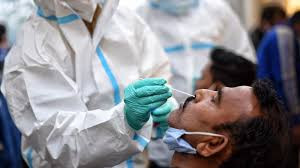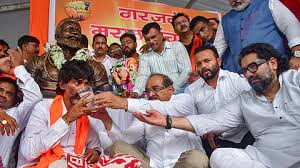COVID-19 Cases Surge in Kerala, Mumbai, and Delhi: Hospitals Asked to Prepare Beds and Oxygen Supplies

IIE DIGITAL DESK : India is witnessing a worrying uptick in COVID-19 cases, with major cities like Kerala, Mumbai, and Delhi reporting a fresh surge in infections. As the number of active cases climbs steadily, health authorities have issued advisories to hospitals and healthcare centers across the country to remain alert, ensure bed availability, and stock up on oxygen supplies in anticipation of further increases in patient numbers.
According to officials from the Ministry of Health and Family Welfare, the spike in cases, though not as severe as previous waves, has prompted concerns due to the high transmission rate observed in urban clusters. Kerala, one of the early epicenters during previous COVID waves, has seen a notable jump in daily infections, particularly among elderly individuals and those with co-morbidities. Mumbai and Delhi are also witnessing localized outbreaks, with some hospitals already reporting a rise in outpatient visits and testing requests.
Dr. Vandana Mehra, a public health specialist based in Delhi, emphasized that while hospitalization rates remain low, the virus is still evolving and its impact cannot be underestimated. “The current variants appear to be more contagious but less severe. However, the risk for vulnerable groups remains high, which is why precautionary measures are essential,” she noted.
Hospitals in the affected regions have been instructed to activate their COVID management protocols. This includes earmarking a portion of ICU and general ward beds for potential COVID-19 patients, ensuring the availability of ventilators, and checking oxygen plants and concentrators for readiness. The Centre has also directed state governments to ensure that COVID testing is ramped up and genomic sequencing of samples is conducted to detect any emerging variants.
In Kerala, the state government has already begun mass awareness campaigns and is urging residents to wear masks in crowded places, especially in hospitals, markets, and on public transport. Local health departments are also mobilizing vaccination campaigns to encourage people to take precautionary doses if eligible.
Mumbai’s civic body, the Brihanmumbai Municipal Corporation (BMC), has also issued fresh advisories to both public and private hospitals. “We are closely monitoring positivity rates and hospital admissions. As a precaution, all facilities have been asked to audit their oxygen infrastructure and stock up on essential medicines,” said a BMC official.
Delhi, which has faced severe health crises during previous waves, is adopting a more cautious approach. The Delhi government has instructed all hospitals to report any unusual surge in fever or respiratory infections and submit daily reports. Mohalla clinics and primary health centers have been asked to stay open for longer hours to handle increased patient traffic.
Experts are also raising concerns about pandemic fatigue among the public. With most restrictions lifted and life largely back to normal, many citizens have become complacent about masking and hand hygiene. Health authorities warn that such behavior could lead to rapid virus transmission, especially in densely populated cities.
While the government has ruled out the re-imposition of major restrictions at this stage, it has advised citizens—especially the elderly, immunocompromised, and those with chronic conditions—to avoid crowded places and follow basic preventive measures. Schools and colleges have also been asked to ensure good ventilation in classrooms and monitor students for any symptoms.
The Indian Council of Medical Research (ICMR) is currently analyzing samples from the affected regions to study the behavior of the virus and assess any changes in its virulence. Preliminary data suggests the rise could be attributed to seasonal changes and the circulation of a new sub-variant, though there is no immediate evidence of a more dangerous mutation.
As India remains vigilant, public cooperation will be key in controlling the fresh surge. Authorities are hopeful that with early preparedness, hospital readiness, and public awareness, the situation can be brought under control without leading to a full-scale health emergency.
You might also like!
















